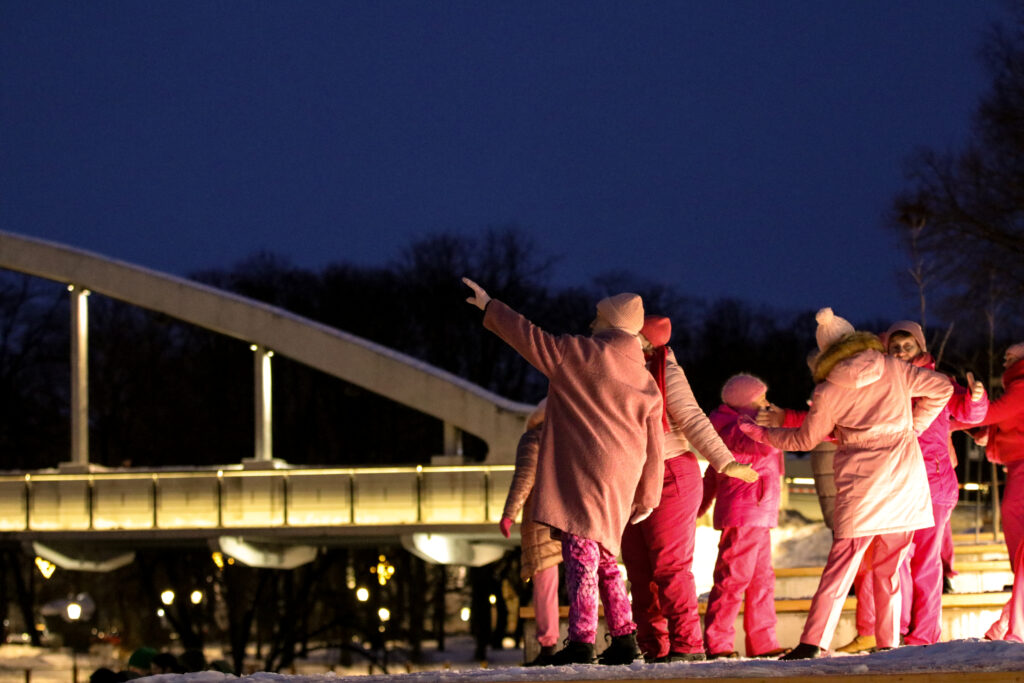How it all comes together: behind the scenes at the European Capital of Culture opening ceremony in Tartu.
This article is published in partnership with the European Capital of Culture Tartu 2024 programme.
The long-awaited European Capital of Culture year finally begins in Tartu and Southern Estonia. This momentous occasion calls for a big celebration. The Tartu 2024 Foundation has been working hard for more than two years to lay the groundwork for a grand opening ceremony worthy of the moment. With the official start of the title year on 26 January, the organisers are reflecting on their journey and giving a first glimpse of the festivities to come.
At the heart of all the events that make up the opening day is the idea that the European Capital of Culture belongs to everyone. This includes the little ones, who are invited to the first event of the day, a fun children’s disco at Club Illusion. Pre-school children, their parents and kindergarten groups can party to the tunes of legendary hip-hop DJ Maido Möls and dance with Dance Camp (Tantsulaager) dancers Britt Kõrsmaa, Märt Agu and Oliver Soomets.
“We got inspiration for the event from many different places. We realised we did not have anything interesting planned for children and, at the same time, we visited the opening of Veszprem (a city in Hungary and one of the European Capitals of Culture last year – editor) 2023, where there was a party for children,” Angela Ader, the education project coordinator of Tartu 2024, says.
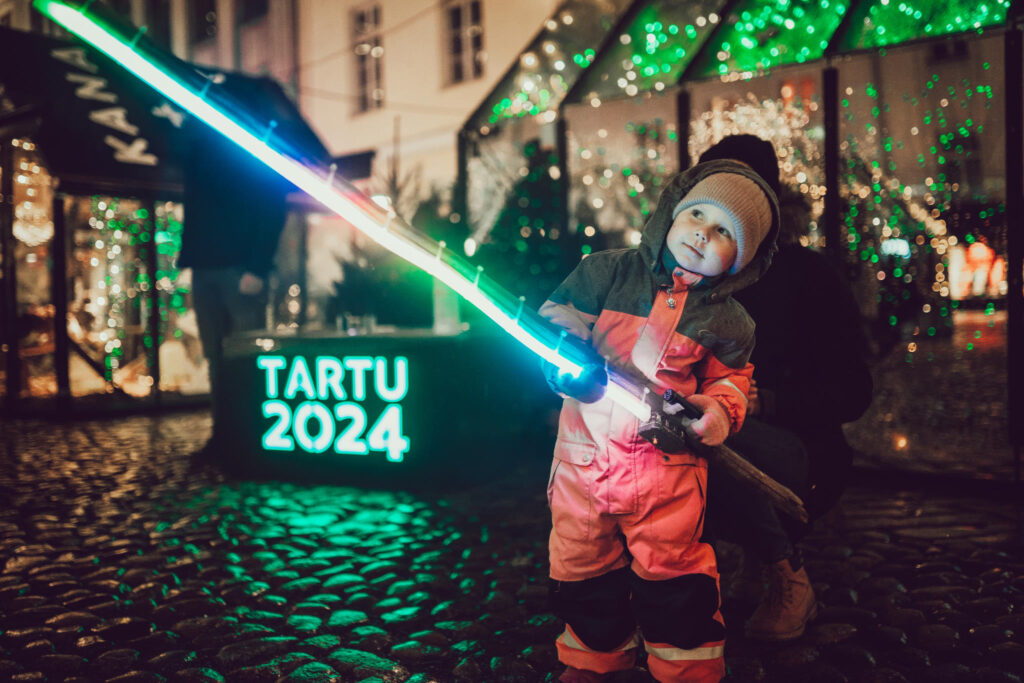
While Tartu 2024 has been co-organising a youth party for 14-year-olds and above for the past three years, the children’s disco is the first dedicated event for this age group. Not surprisingly, organising events for young children has its own special requirements.
“Although the basic things are the same when it comes to planning events for both adults and children, we immediately involved representatives of Tartu kindergartens to think about the adjustments we needed to make. For example, you cannot have a lot of flashing lights or loud music like in a regular nightclub. You also have to have quiet areas for children in case they get overstimulated,” Ader notes.
Another challenge for the organisers was bringing children into a space designed for adults. “The space has to be suitable and comfortable for children, everything has to be age-appropriate, so we have to remove or hide alcohol advertising,” the organiser said.
Perhaps the most unique aspect of the kids’ disco is the artists. The beats will be selected by DJ Maido Möls, an icon of the Estonian hip-hop scene and organiser of the Estonian Hip-Hop Festival. Even if the DJ puts aside his usual hardcore hip-hop for a party, good music is still guaranteed.
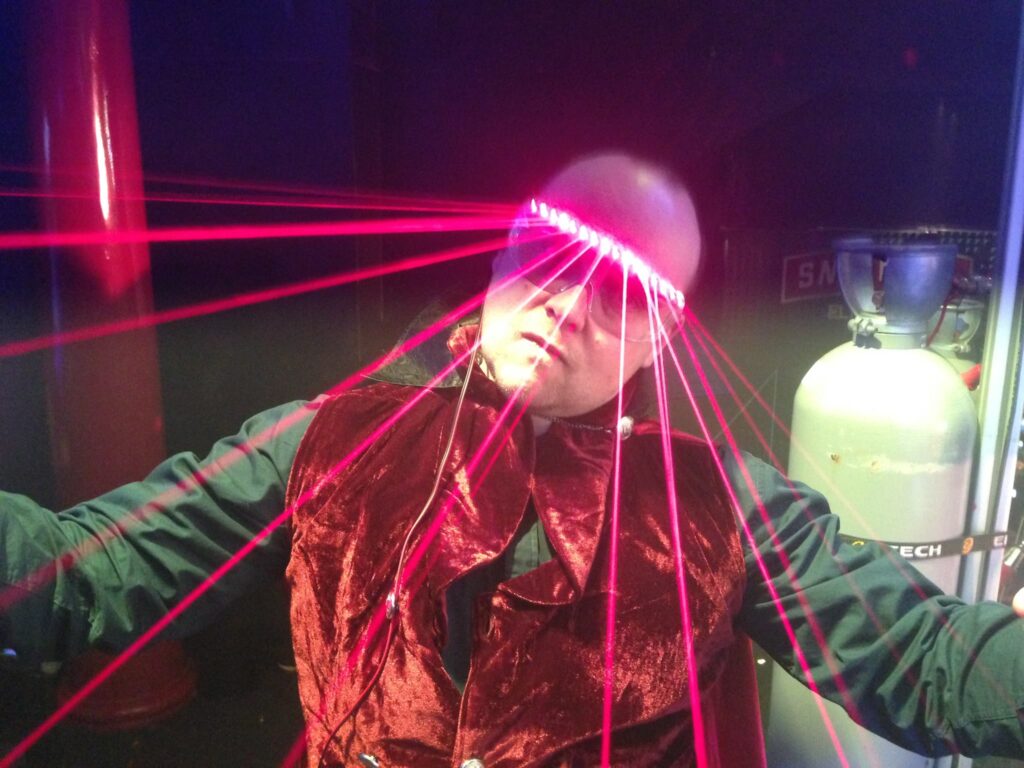
“We have researched which songs are hits among pre-school children. We talked about ‘Baby Shark’,” laughs Ader, “and it turned out that Karl-Erik Taukar (an Estonian singer – editor) is number one among the kids.”
The set list focuses on Estonian music, with international pop hits accompanying the Dance Camp dancers. “Their repertoire is based on big pop hits that the kids can dance along to. It will be like the popular game ‘Just Dance’, but in real life,” Ader says.
For those who cannot make it to Club Illusion, the organisers have set up a broadcast of the party. With the stream, all kindergartens can host their own party, be it in Tartu, Estonia or around the world.
“We want the children to have something to do and our kindergartens and teachers to be visible. They do a very important job and it needs to be appreciated,” says Ader, pointing to the two main partners in the organising team: sports teacher Tiina Kivisalu and music teacher Marju Järvpõld.
All in one in the European Capital of Culture
The highlight of the opening day is the “All is One!” ceremony, a theatrical performance on the banks of the River Emajõgi in the heart of Tartu. One of the leading forces behind its conception and organisation is Heigo Teder, production coordinator of Tartu 2024 and chief organiser of the opening ceremony. The man who previously organised the Estonian Independence Day reception and concert has been putting the pieces together for over two years.
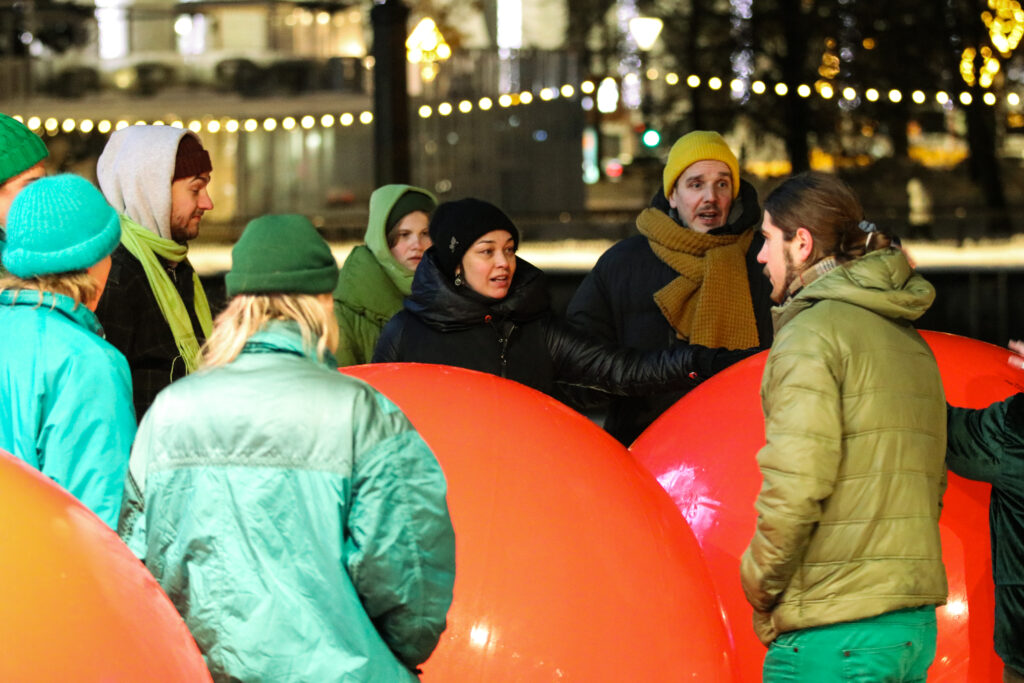
As the ceremony is attended by an audience of all ages, made up of locals and foreigners, the focus quickly shifted from words to visual language, music, rhythm and choreography. The search began for a creative team that could tell stories without words.
“We managed to get the very best creatives in Estonia on board. As a bonus, almost all of our crew is connected to Tartu or Southern Estonia in one way or another,” Teder says. The list includes director Taavi Tõnisson, playwright Eero Epner, videographer Emer Värk, animator Sander Joon and his crew, lighting designer Priidu Adlas, musical director Liina Sumera and choreographer Olga Privis.
The opening performance “All is One!” is about the relationships between people, places and times. At the centre of the story is Tartu: the real and the idealistic, dreaming of the future and remembering the past, full of energy, a place where there is room for everyone and life is full of joy.
“We were inspired by the idea of human networks. The play will tell a story about how these networks and connections are created. How people can meet and what can come out of those meetings. How to find cooperation and intergenerational unity,” Teder said.
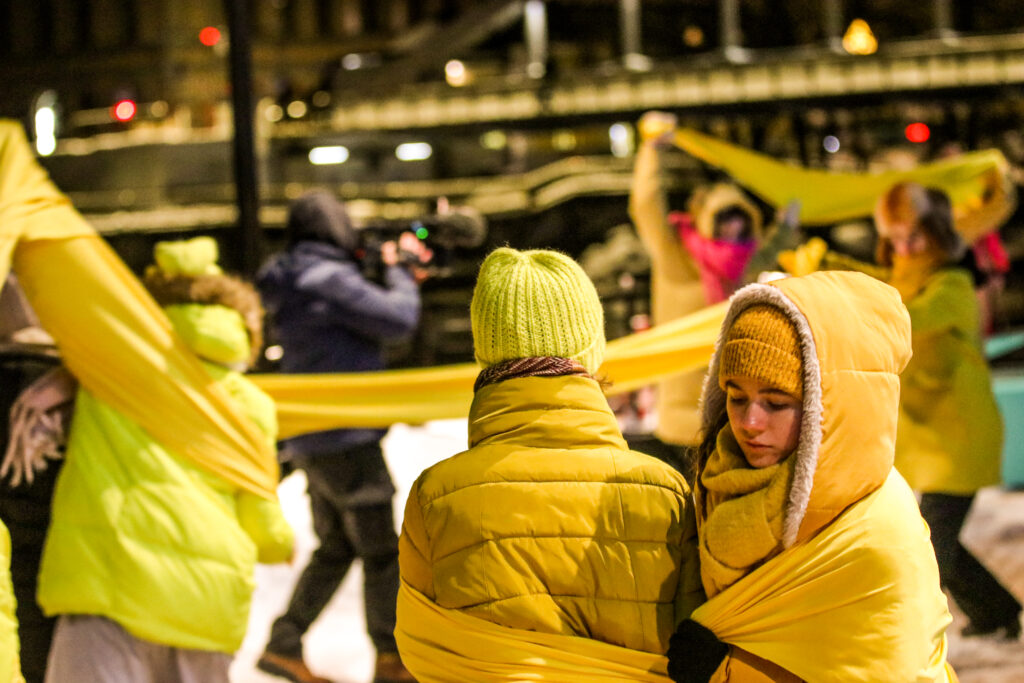
The show has a cast of over 200 people, including popular Estonian musical acts such as Trad.Attack! and Sander Mölder, professional dancers, performance art students, but also ordinary Southern Estonians found through an extensive casting process.
“During the eight months of rehearsals we found a common language. It is amazing to see how strangers become friends and support and motivate each other,” Teder noted.
One thing is for sure, there has never been a production of this scale in the centre of Tartu. The production will take place in the area between Kaarsild and Rahu bridge on the side of the Atlantis building on the riverbank. Thus, the audience and the stage will be separated by the river.
Another unique aspect is the stage: the largest river barge on Estonian inland waters, the 35-metre-long Koit. Still not satisfied with the size, the organisers have built a stage construction on the barge that is even bigger than the stage of the Vanemuise Theatre in Tartu.
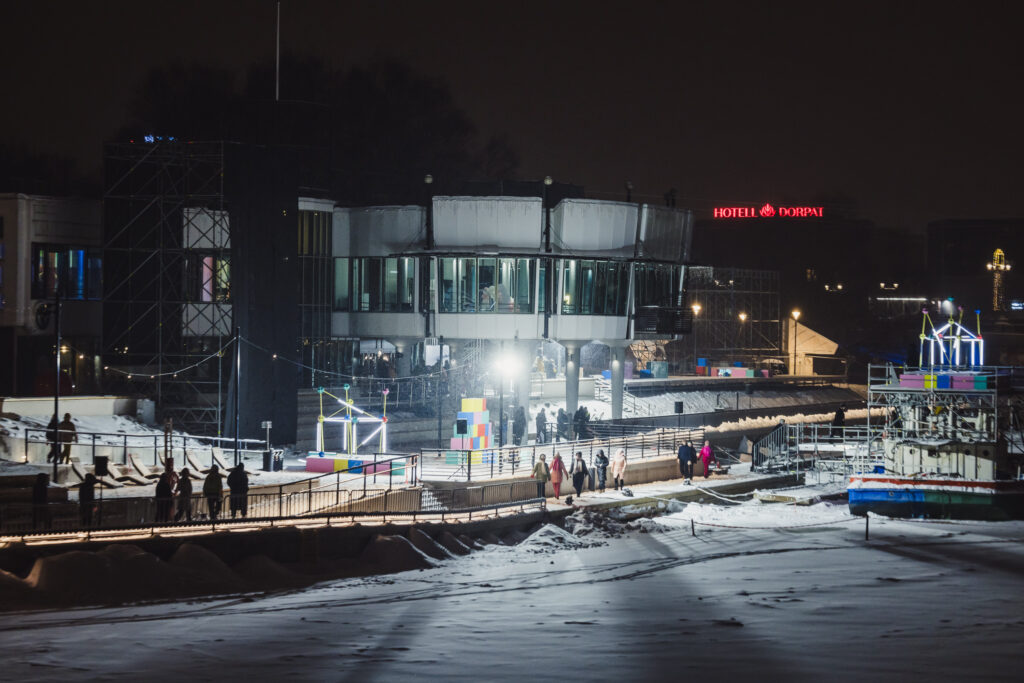
The organisers are expecting around 10,000 people to attend the opening ceremony. To make sure the show is visible to the masses, the Tartu 2024 Foundation has gathered all the LED screen modules available in Estonia.
Those unable to come to Tartu to see the show live will be able to watch it on the Estonian Television or on the European Capital of Culture website, where it will be broadcast with English translation.
“The people at Estonian Television have joked that not a single camera will be left in their warehouse because their entire crew will be in Tartu. Our goal is to produce the best possible broadcast,” added the chief organiser.
Afterparty for the ages
The evening continues with a procession led by a mutant car called Reisiv Siil (Travelling Hedgehog), accompanied by boisterous music and dancing.
Partygoers will be taken to the Estonian National Museum for an unprecedented open-air rave, headlined by Sigma, a British drum and bass DJ and record production duo celebrating the release of their new album “London Sound”. Other acts of the night include Heidy Purga, the current Estonian culture minister, Emily Makis and DJ Hi-Phi (UK), and father-son duo Sound In Noise x Olivar ft. MC Slin.

“The choice of location for the open-air rave was key, because we expect a big party,” says Tartu 2024 producer Andres Tölp. “As far as I know, there has never been an open-air rave like this in winter. We have a completely new and unique approach”. The organiser has great faith in the “crazy Estonians”, believing they will brave the wintry weather and party until the early hours of the morning.
For those who are afraid of the cold, the Estonian National Museum will be jam-packed with fun activities. A DJ timeline will take guests on a musical journey through the decades from the 1970s to the present day. The DJs include Eiki Nestor, Peeter Volkonski, Jüri Makarov, Heivi Saaremets, Paul Oja, Hannaliisa Uusma and Micaela S. Visitors can also catch a glimpse of the new exhibition “Who Claims the Night?”, which opens in February.
Nightlife in Tartu and Estonia in general has been a hot topic recently, with many popular venues closing due to financial pressure or burnout among those active in the scene. The European Capital of Culture Tartu 2024 wants to revitalise the nightlife sector in the region and this is the first step in that direction.
“The whole week will be a celebration. Our events will have a party atmosphere, and many of the local venues will have their own parties at the same time, because so many people are coming to Tartu,” says Tölp, stressing the whole city will benefit from the day.
“If we can give a boost to the nightlife sector in winter, which is the hardest time for them, then we all benefit. January is the hardest month for the entertainment sector and for many people personally. We want to bring colour and joy to the winter darkness,” Tölp adds.
Come one, come all
The organisers are full of anticipation. Although exhaustion looms in the background, the support team and the beautiful moments throughout the process give them the strength to keep going.
“Everyone gets tired, so we have to lean on each other,” Heigo Teder asserts. “At the end of a very long day’s rehearsal, I watched a small child bravely wade through thick snow, hand in hand with a professional dancer. They were doing it between stage sets taller than houses. The pride and joy I felt at that moment, knowing that so many people were giving their all for this one day, is significant.”
Learn more about the European Capital of Culture Tartu 2024 grand opening and watch the broadcast.

